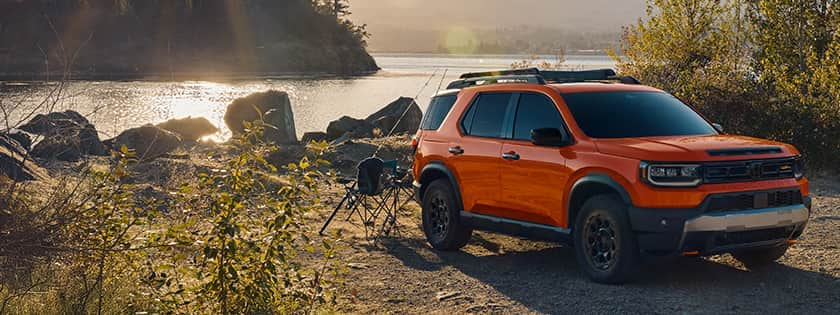
All the recent talk of the Nissan Juke R got me digging around on my computer where -- surprise, surprise -- I discovered some lost suspension walkaround images of our departed 2011 Nissan Juke long-term test vehicle.
According to Nissan, $590,000 will soon get you a Frankenstein of a Juke-looking machine with a GT-R drivetrain and suspension stuffed underneath.
In hopes that I'll be able to show you the Juke R's underbelly someday, here's what the $26,000 Juke SL AWD "base model" has going on. If you like, hop on over to the suspension walkaround of the 2009 Nissan GT-R I published when, sniff, we used to have one in our long term test fleet.
If you squint real hard you might be able to envision the resulting Juke R mashup. I don't think I could ever squint hard enough to see $590,000, though.

The Juke's front end rides on fairly conventional MacPherson struts.

As expected, the transverse-engined Juke steers (green) from behind the front axle centerline. It also uses a direct-acting stabilizer bar link (yellow) that mounts, well, directly to the strut housing.

A one-piece stamped steel lower control arm pivots on two bushings that are press-fit into it. The forward one is much stiffer because its position exposes it to the bulk of the lateral cornering loads. It may even be a ball-and-socket or "pillow ball", but it's hard to tell without diassembling things.
Both are attached to a perimeter subframe (green) that encircles the engine bay.

Everything here is steel or iron, including the single-piston sliding brake caliper.
Incidentally, keep your eye on the "knee" that characterizes the bolted joint (yellow) that connects strut to the knuckle. This sort of knee is common to almost all front strut suspensions.
Note how the strut axis does not point directly at the lower ball joint. Even though the whole mess rotates when you twirl the steering wheel, the strut axis does not coincide with the actual steering axis.

This is done to make room for the tire. But the bent arrangement does create a lateral load on the strut that causes friction (or "stiction") in the so-called rod guide, the hidden point at the bottom of the bellows where the moving rod that connects to the working piston exits the strut body.
To combat this stiction the spring is cocked at an angle that aligns its axis closer to that of the steering axis.

Presenting the anti-Brembo: one-piece cast iron rotors (ventilated, of course) and single-piston slidling calipers. It works here, but something tells me the Juke R will have more.

In back the AWD Juke rides on an independent multilink suspension similar to that of a Mini but rendered in steel.

The AWD Juke's massive trailing arm pivots on a steeply-angled bushing that points in the general direction of the pivot point of the lateral links. The big rubber bushing up front has been carefully tuned to damp out harshness. It also provides the necessary give to allow a measured dose of toe-in to be generated as lateral loads build in corners.
This trailing arm is also "one" with the knuckle and rear hub, so it does the work of two links and handles accel and brake torque reactions all by itself.

In this shot it's easier to see the lower lateral link in the background; the upper one is stacked on top of it about 8 inches higher.
Our coil spring (yellow) nestles into the trailing arm about two-thirds of the way back from the forward pivot bushing.

The lower link's outer pivot connects to the trailing arm itself at a point just below the wheel bearing. You're looking straight in toward the rear differential.

Camber angle can be adjusted via this eccentric cam (white) on the inside end of the lower lateral link. Nearby, the rear stabilizer bar and its drop link (yellow) bolt to that lower link in a way that seems to box the structure and enhance its strength.
Meanwhile, the elusive and upper lateral link (green) hovers overhead.

Braking chores are handled by single-piston sliding cailpers and solid rotors.

The prominent "hat" section (and the presence of a parking brake cable in earlier shots) tells us the parking brake is of the drum-in-hat variety.

Two clutches surround the rear diff, indicating the Juke's AWD system has torque-vectoring capability.

Our Juke SL came with P215/55R17 tires mounted on 17-by-7 aluminum alloy rims; together they weigh 48 pounds.




